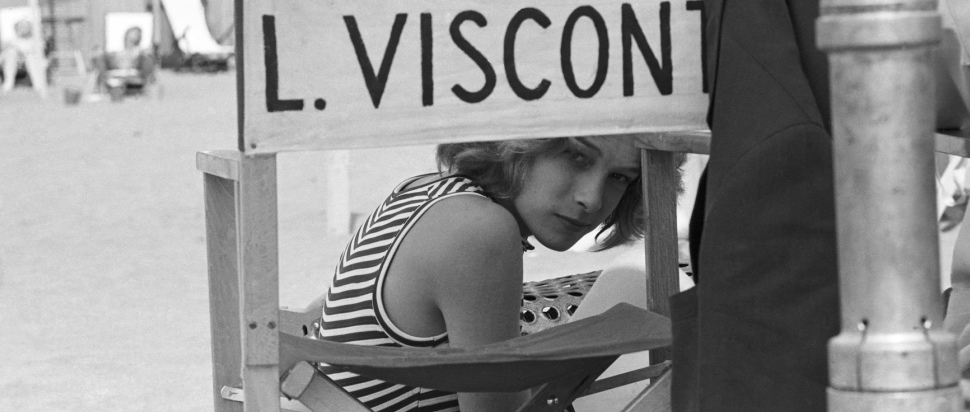The Most Beautiful Boy in the World: 50 years later
In 1971, 15-year-old Björn Andrésen became a symbol of youthful beauty after starring in Luchino Visconti’s Death In Venice. Filmmakers Kristina Lindström and Kristian Petri tell us why they wanted to tell Andrésen's full story five decades later
“We came to the Hotel de Bains, the hotel that was the set of Death in Venice, which is now a magnificent ruin,” recalls Kristian Petri, co-director of The Most Beautiful Boy in the World. “It’s one of the world’s most beautiful hotels and it’s just decayed. There was an architect who opened it up for us and we could shoot there for two or three days. And he [Björn Andrésen] stepped in there and said, ‘Oh this is fantastic, the house is just like me.’”
When Petri and co-director Kristina Lindström sit down with The Skinny via Zoom, their zeal for their five-years-in-the-making documentary is palpable. The Most Beautiful Boy in the World follows Björn Andrésen from his fateful audition for Luchino Visconti’s Death in Venice – in which he was subsequently cast as Tadzio, the stunningly beautiful adolescent who becomes the obsession of an ageing writer visiting the titular city – through a Japanese pop career before diving back to his earlier childhood and looking intimately at his life today.
Lindström is precise about the pair’s artistic vision: “We wanted this widescreen format like Death in Venice, so that [Andrésen] would in a way reclaim the film.” This vision helped sell the project to Andrésen, whose cooperation was essential. “We didn’t want to come crashing into his life and make another horrible experience,” Petri says. “It might sound a bit pretentious, but we wanted it to be a piece of art, not a sort of regular TV documentary. We were very explicit that we wanted to make [Andrésen’s] story, not the story about Tadzio.” With the film scheduled for release in 2021 – the 50th anniversary of Visconti’s film – there was an additional “element of curiosity and history.”
In the end, Andrésen agreed. “[Andrésen] had to decide when he wanted to let us in,” Lindström remembers, describing the “step by step” and “continuous” development process. “It took us one year before we even shot in his apartment!” Petri says. “Nobody else had been there for ten years, so it was a big step.
“The hardest thing to talk about was his boy [who died in infancy],” Petri continues. “But he knew and we knew, we wanted to talk about it, but he had to decide how.” On a more joyful occasion, Petri describes Andrésen’s “calm and casual attitude” during an apartment shoot: “He’s a film star, he has this presence and he’s very cool, the camera loves him. We were floating around him, he was smoking and playing on his piano. He was very easy about us being there.”
Andrésen’s increasing openness was matched by mountains of personal and professional archival material. Home recordings by Andrésen’s mother, who passed away in his childhood, proved a goldmine. “I never, in my professional life, have gathered so much material. Ever,” Petri says. “We knew we were going to have archive material but not this! There was so much we had no idea about.” Lindström adds, “I was sitting and listening to hours and hours of audiotapes which his mother and aunt had made. I heard this young boy, Björn, three or four years old, and he’s reading this saga about the boy who finds his mother.”
The pair speak excitedly about the three-year search for Death in Venice's press conference footage at the Cannes Film Festival, previously believed lost. “We went to Rome with an Italian-speaking Swedish girl, and she was very persistent and we found it,” Petri says. “It was very heartbreaking the way [Visconti] treated Björn,” he adds, alluding to the director’s comments during that press conference that his 16-year-old star was less perfect now than he was at 15.
Material from Japan proved equally rich. “I’m still amazed that of all these people [Andrésen] worked with, we found everybody,” Lindström says. “They remembered Björn, he was not something that just dropped away from their lives.” Petri adds that “for many it was very emotional seeing him. They could feel that he didn’t feel comfortable, doing these commercials and fashion shoots.”
Petri and Lindström do not believe the entertainment industry exploitation experienced by Andrésen has disappeared. “I don’t know if it’s a #MeToo story,” Petri says, “but it has to do with the structures of power and objectification. I think some people say, ‘Oh, this was 50 years ago.’ But it’s very much the same today, behind the scenes.”
“When you go online you see all these fan pages, 50 years later,” Lindström adds. “People are making their own videos with his face; they are obsessed with him. He is really objectified in this extreme way.” She reflects that “to be so young drawn into turmoil that you cannot resist destroys the things you wanted to do. [Andrésen] wanted to be a musician, a pianist – he is, but he wanted to do so much more with it.”
The Most Beautiful Boy in the World is released on 30 Jul by Dogwoof
